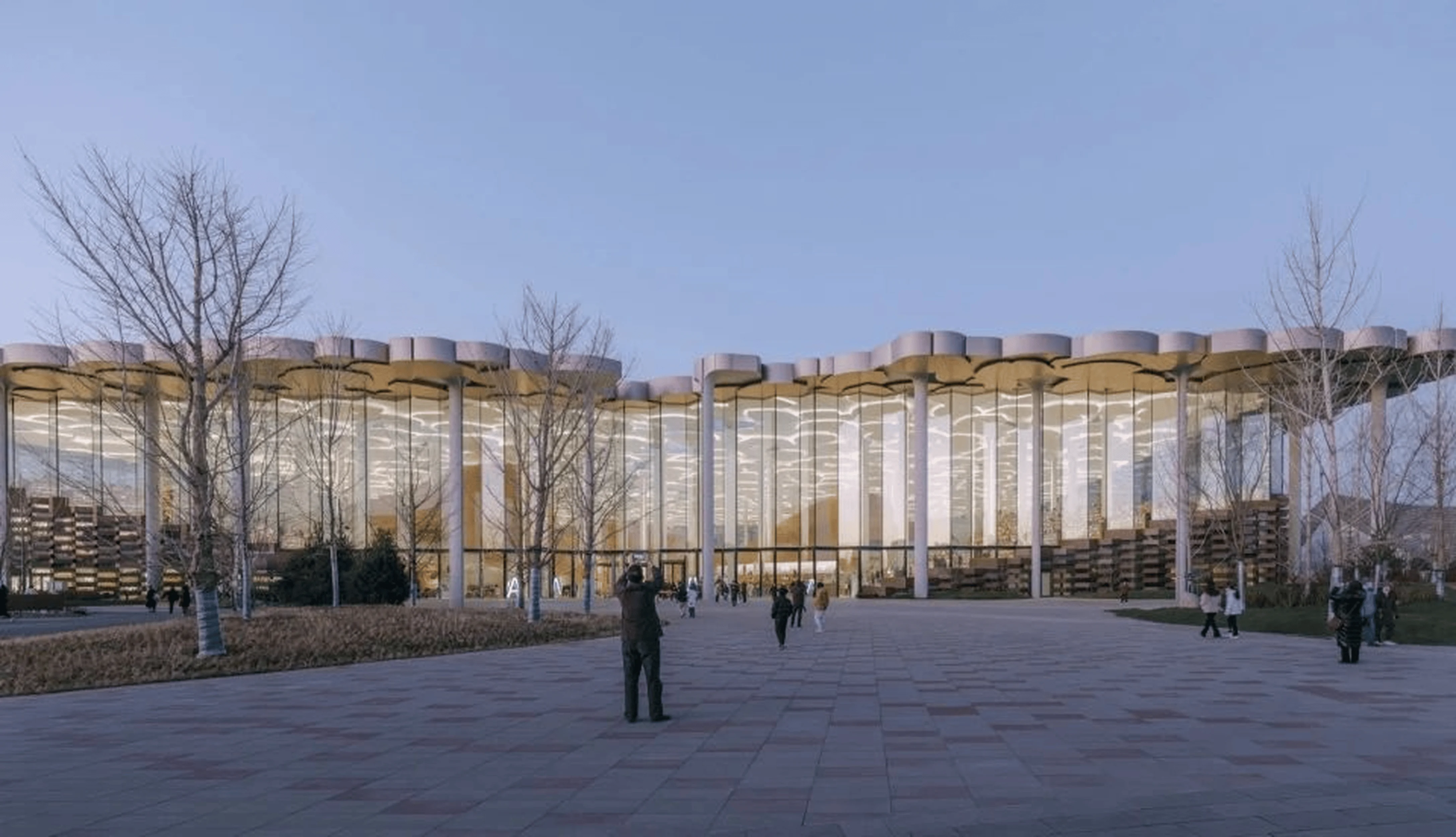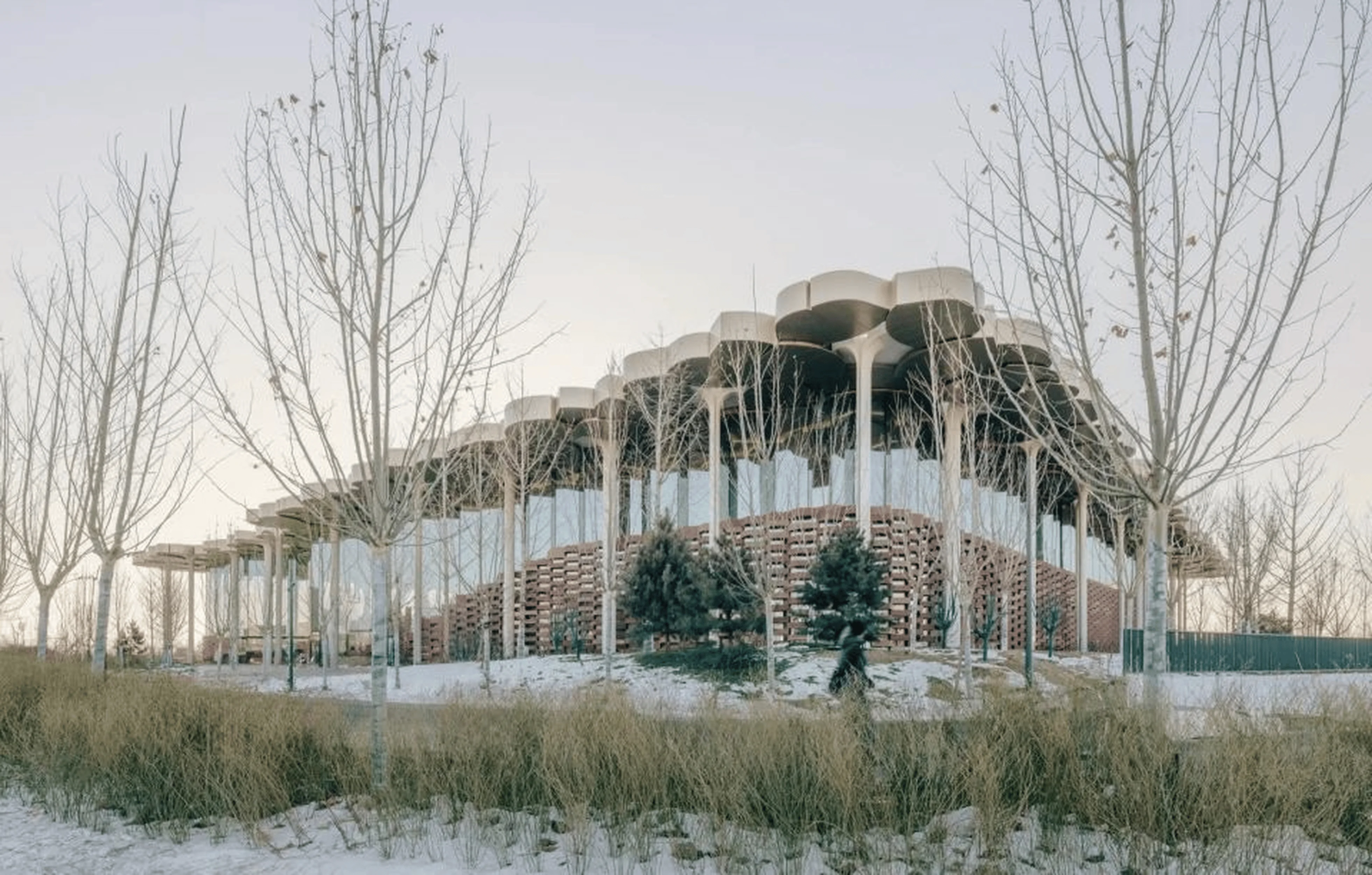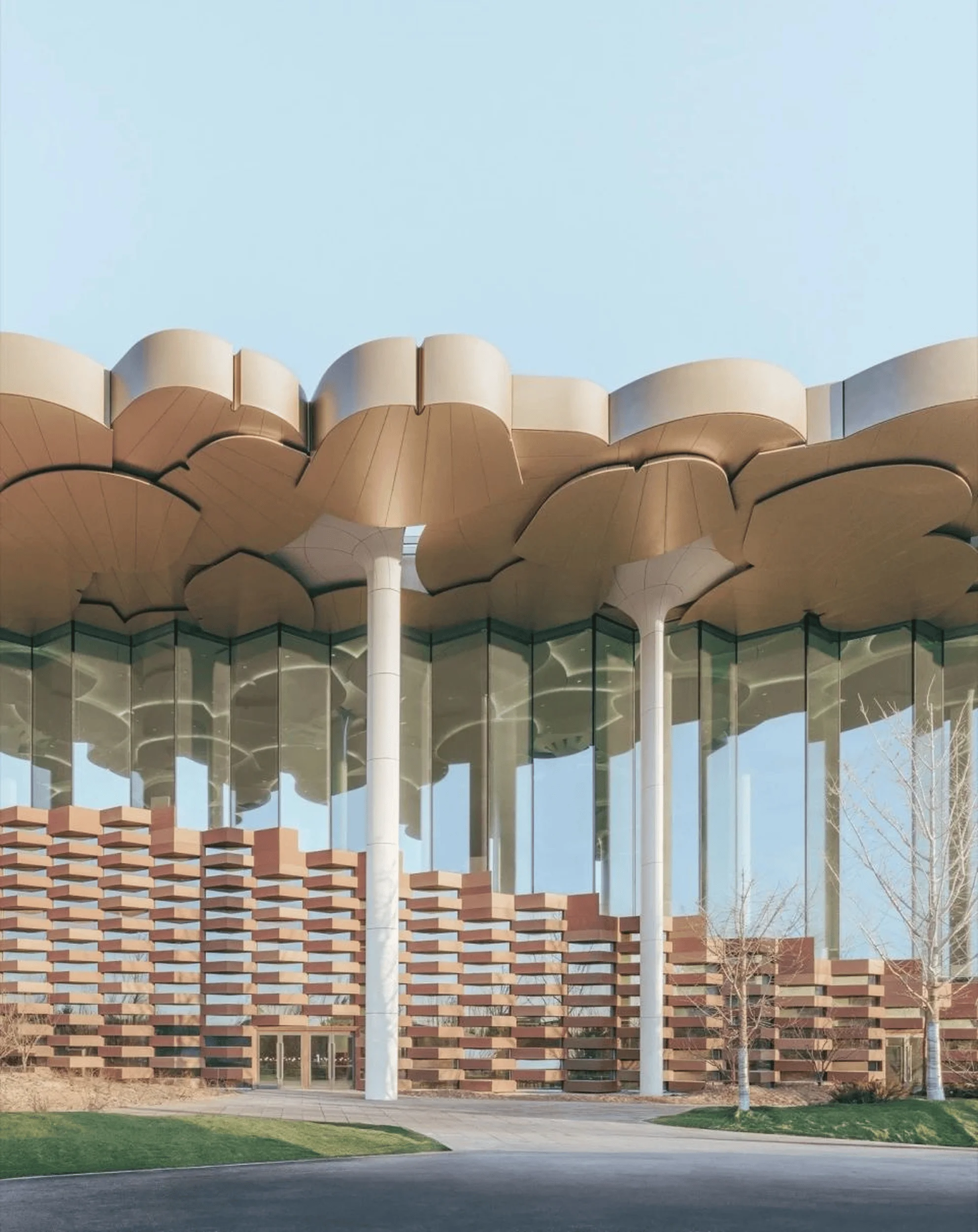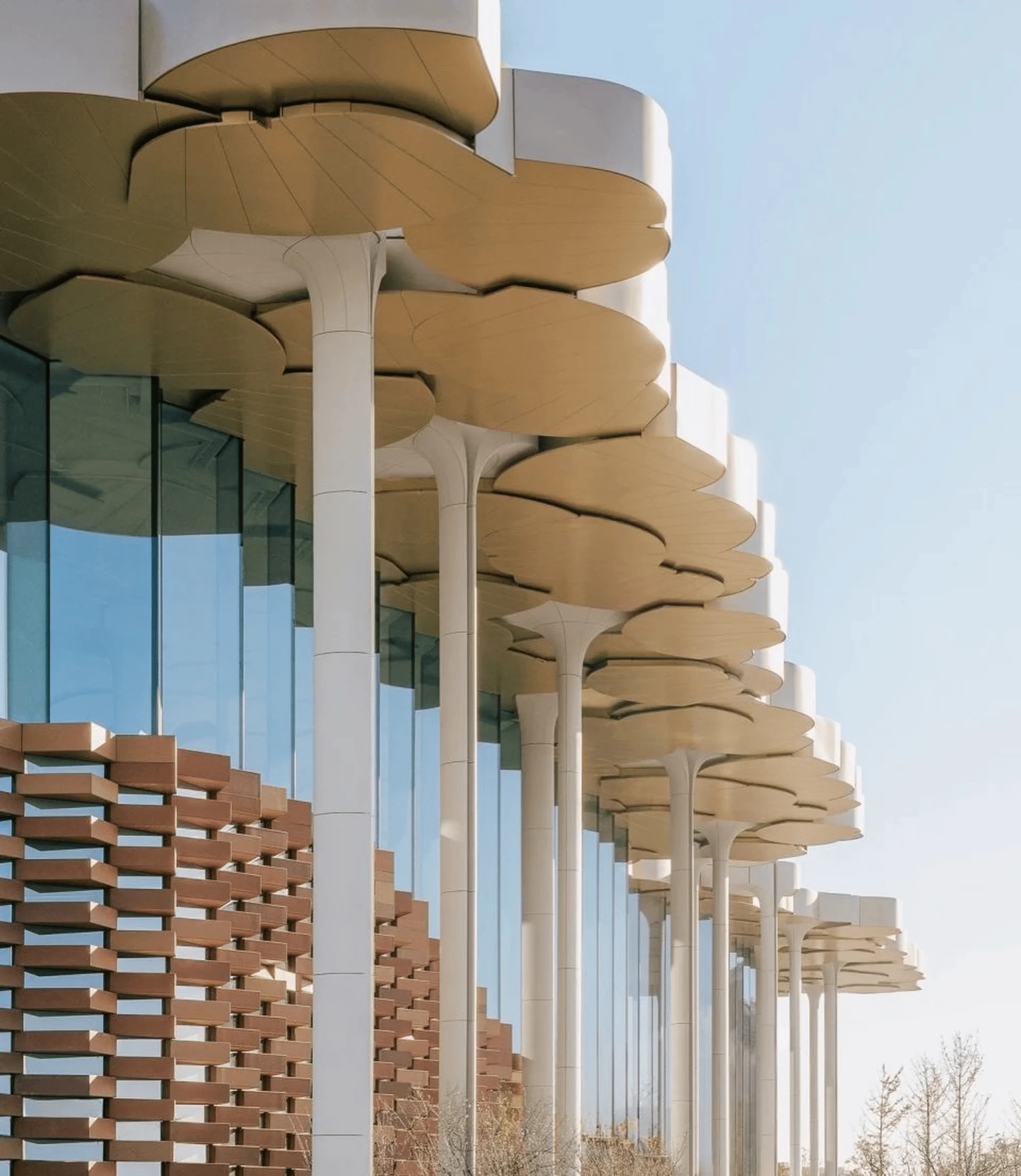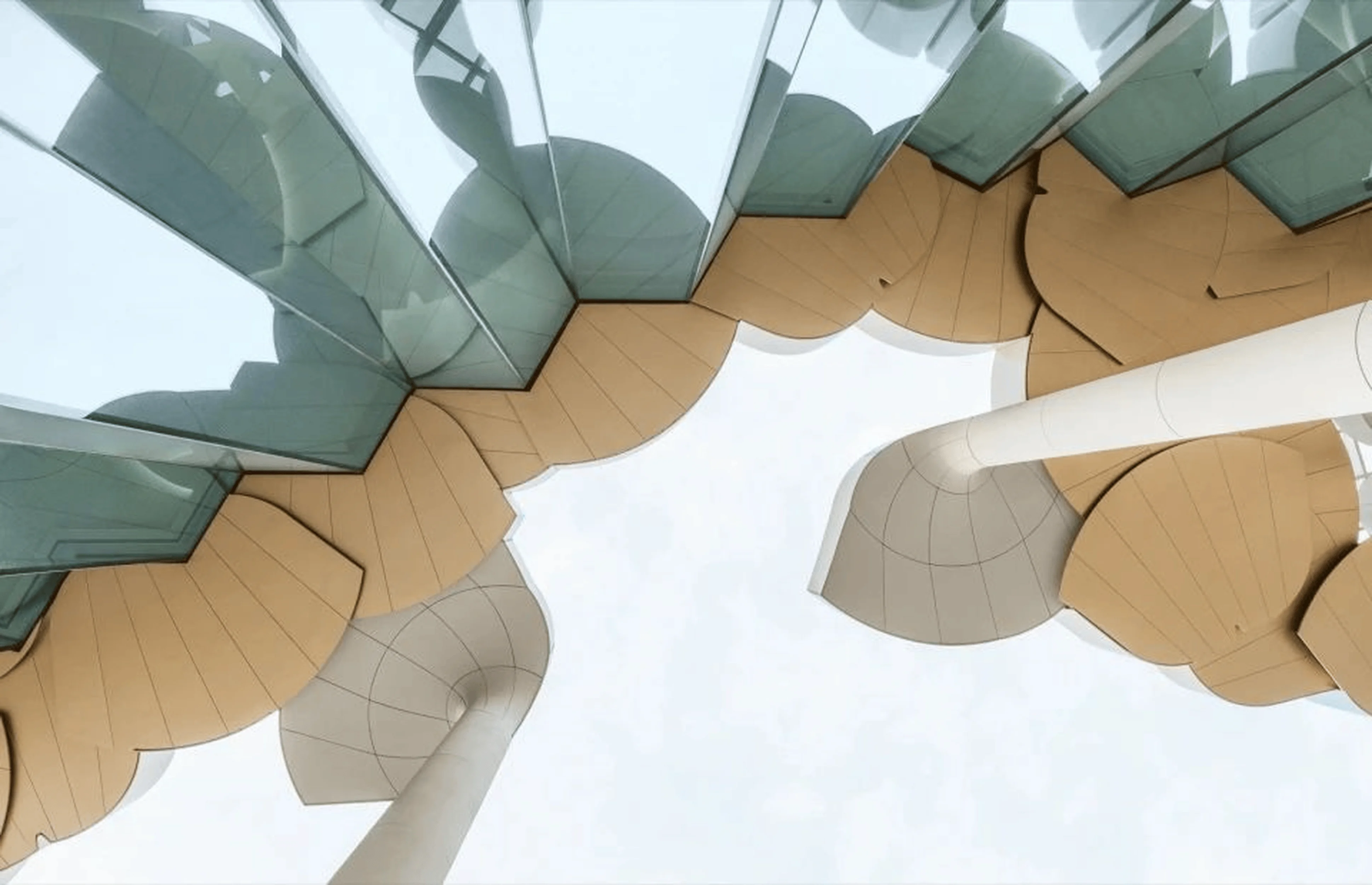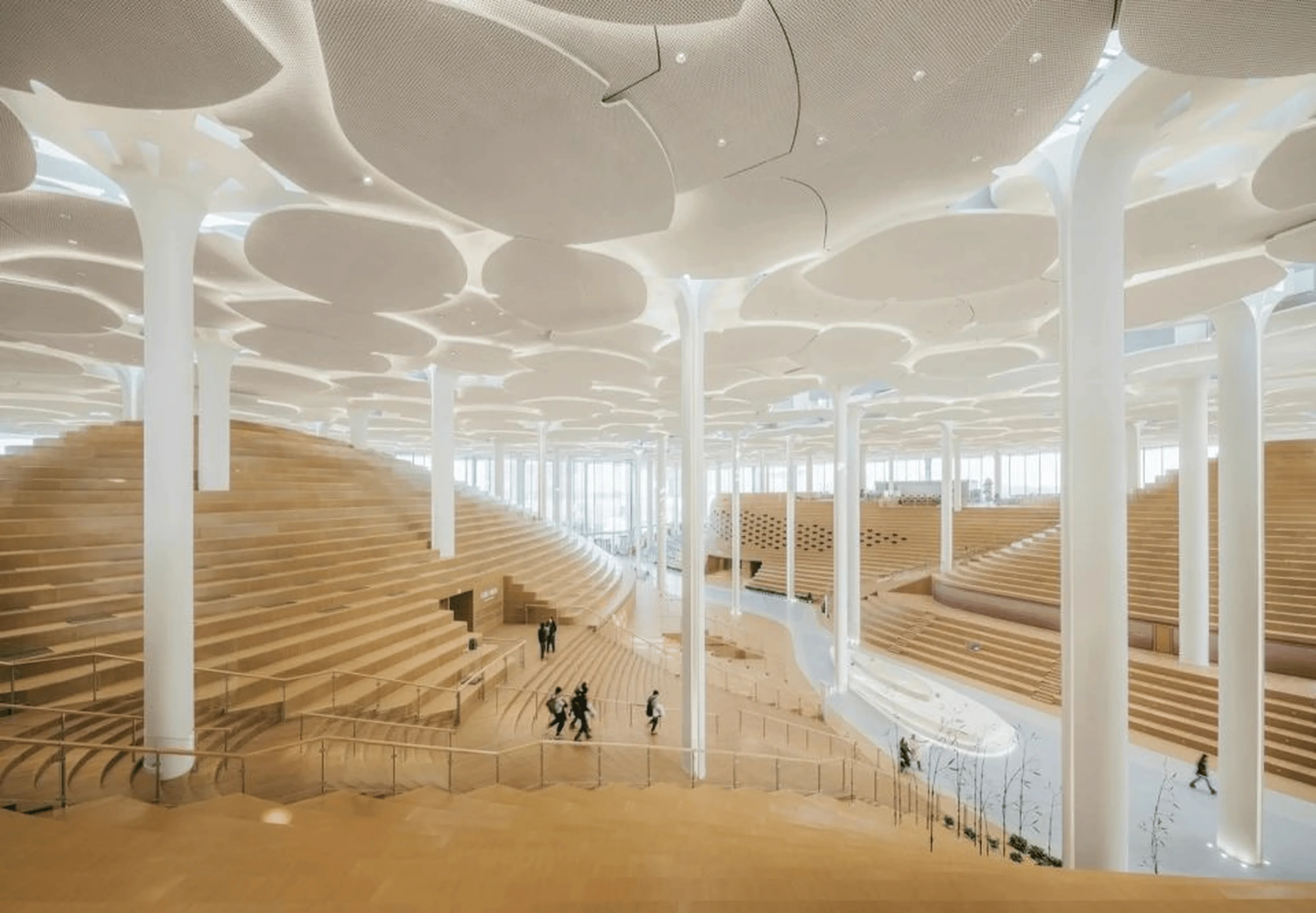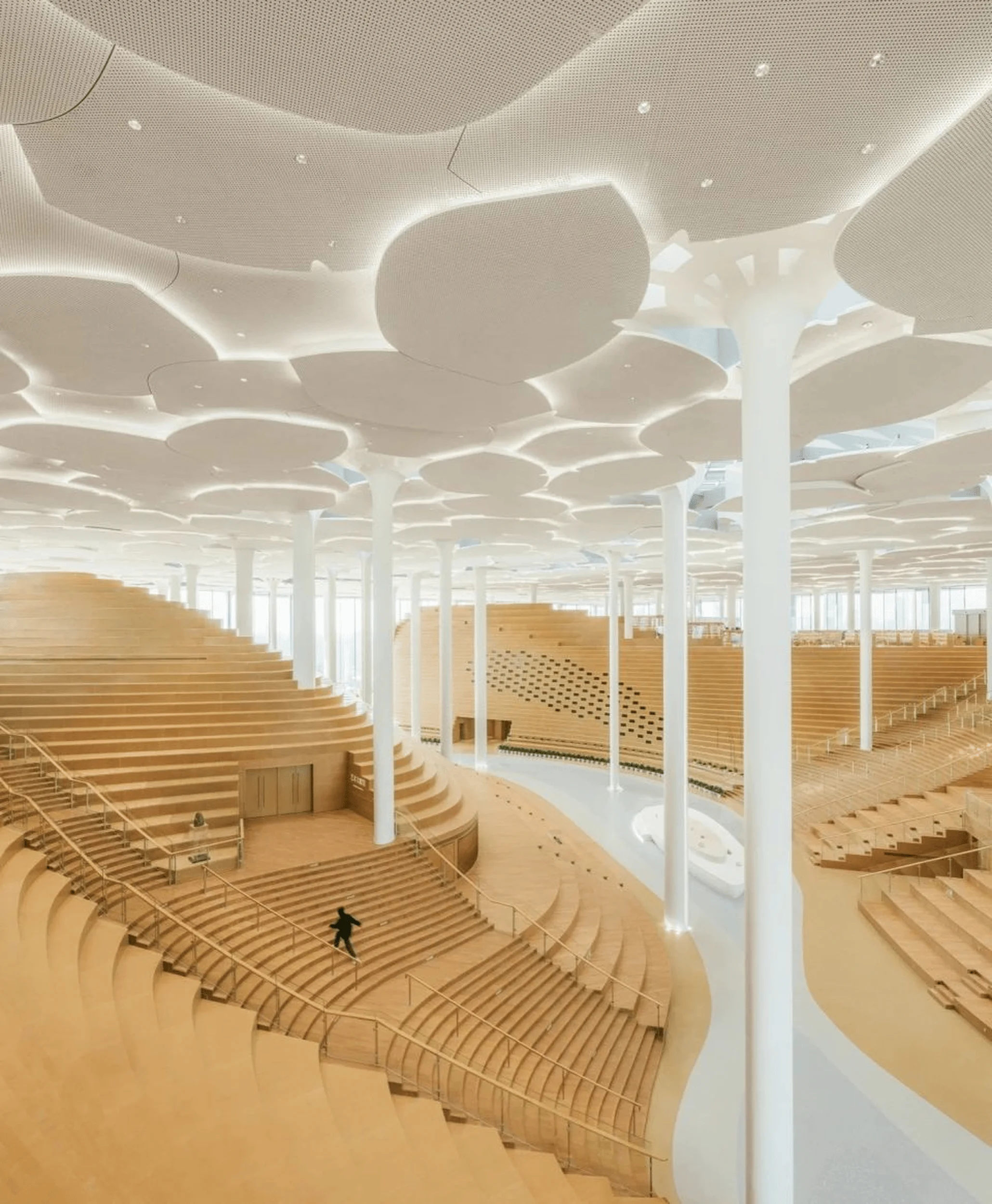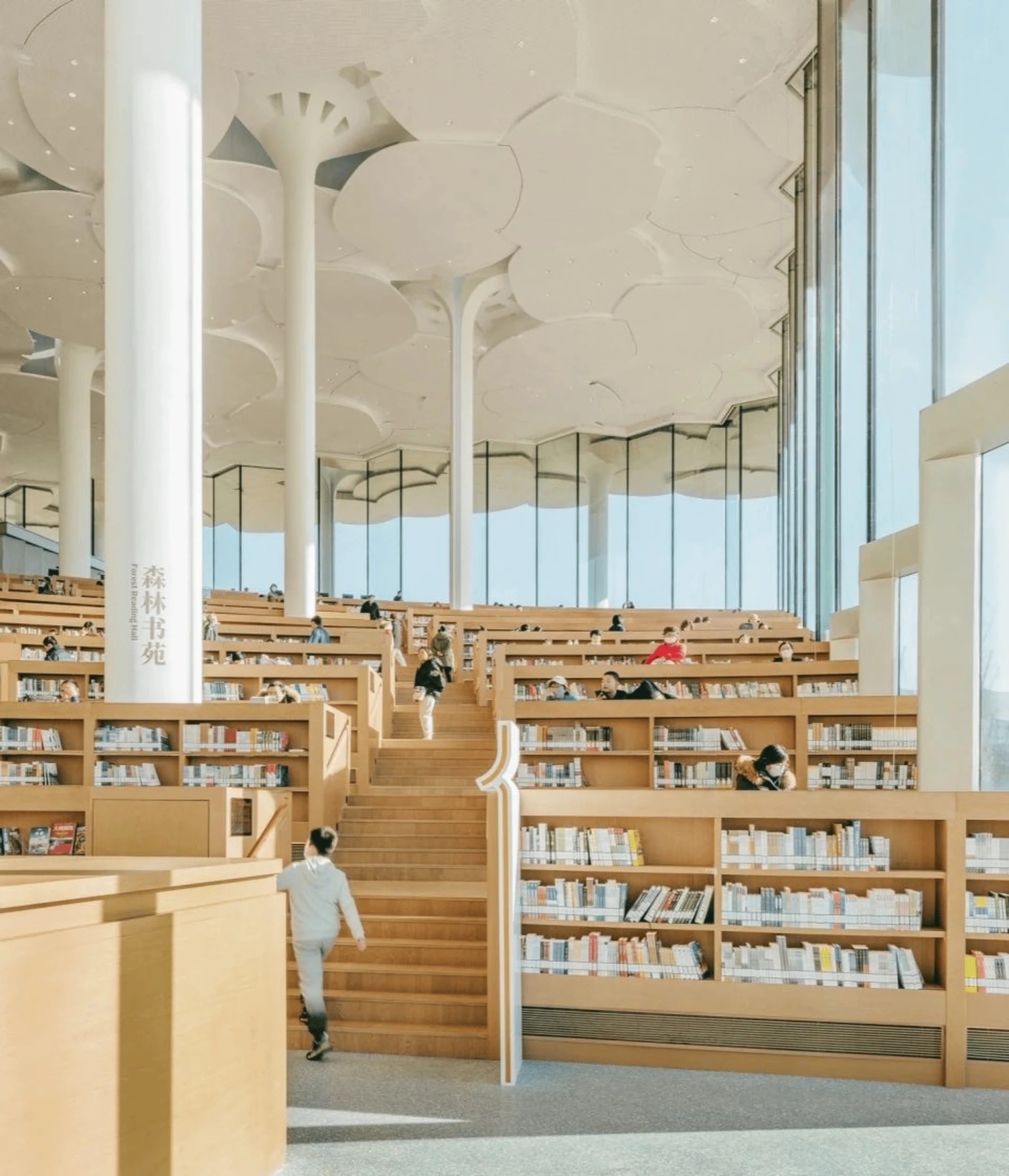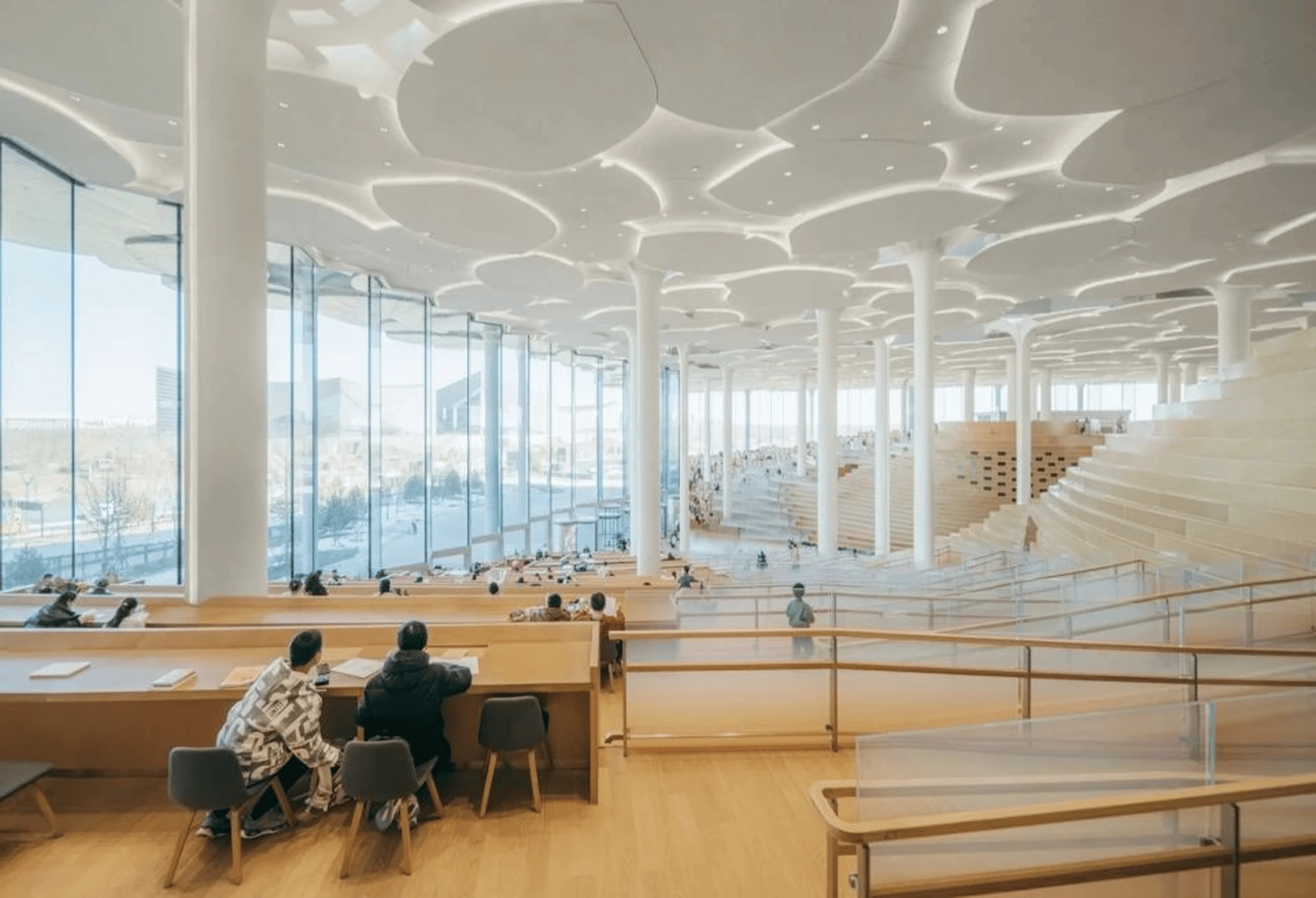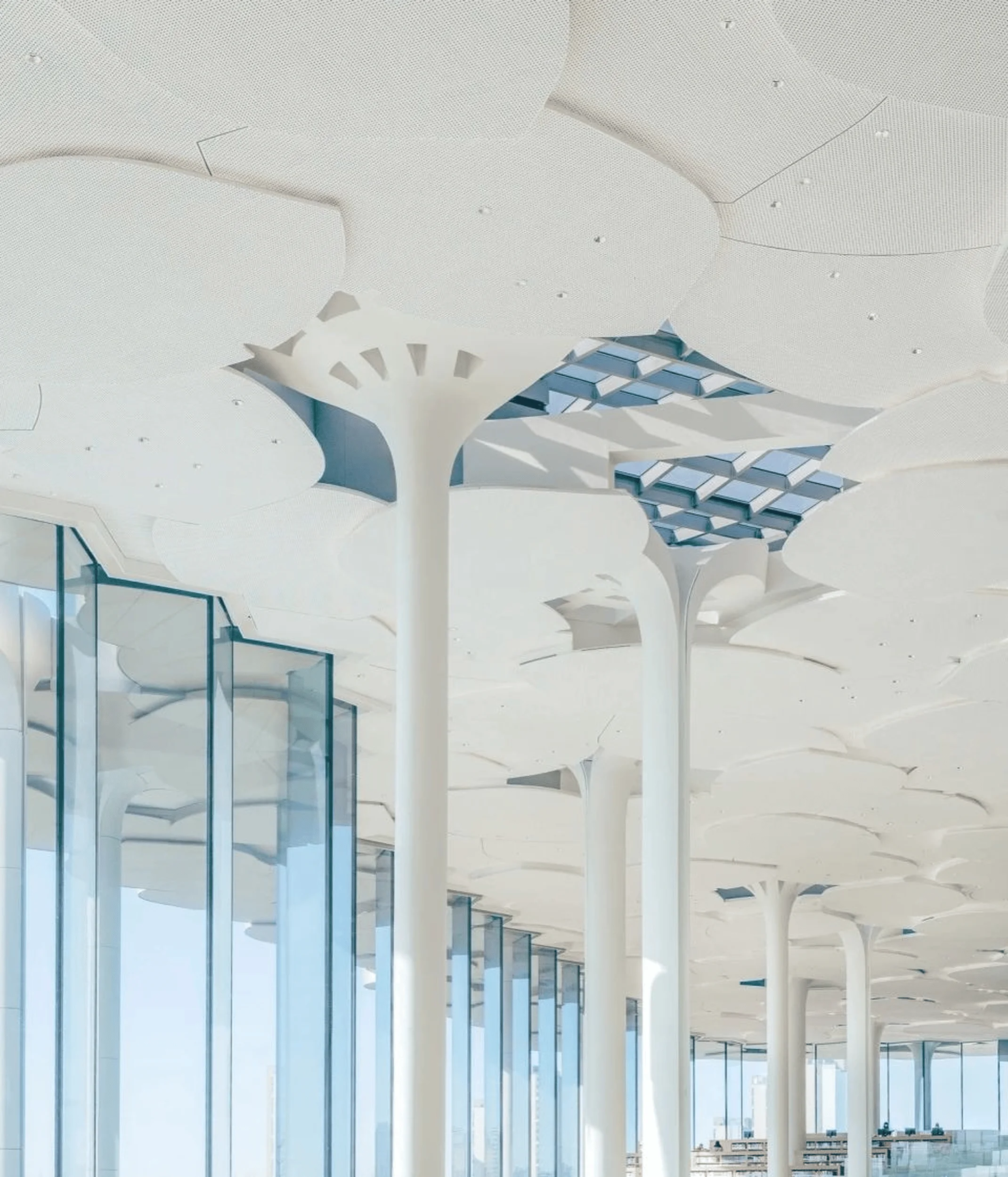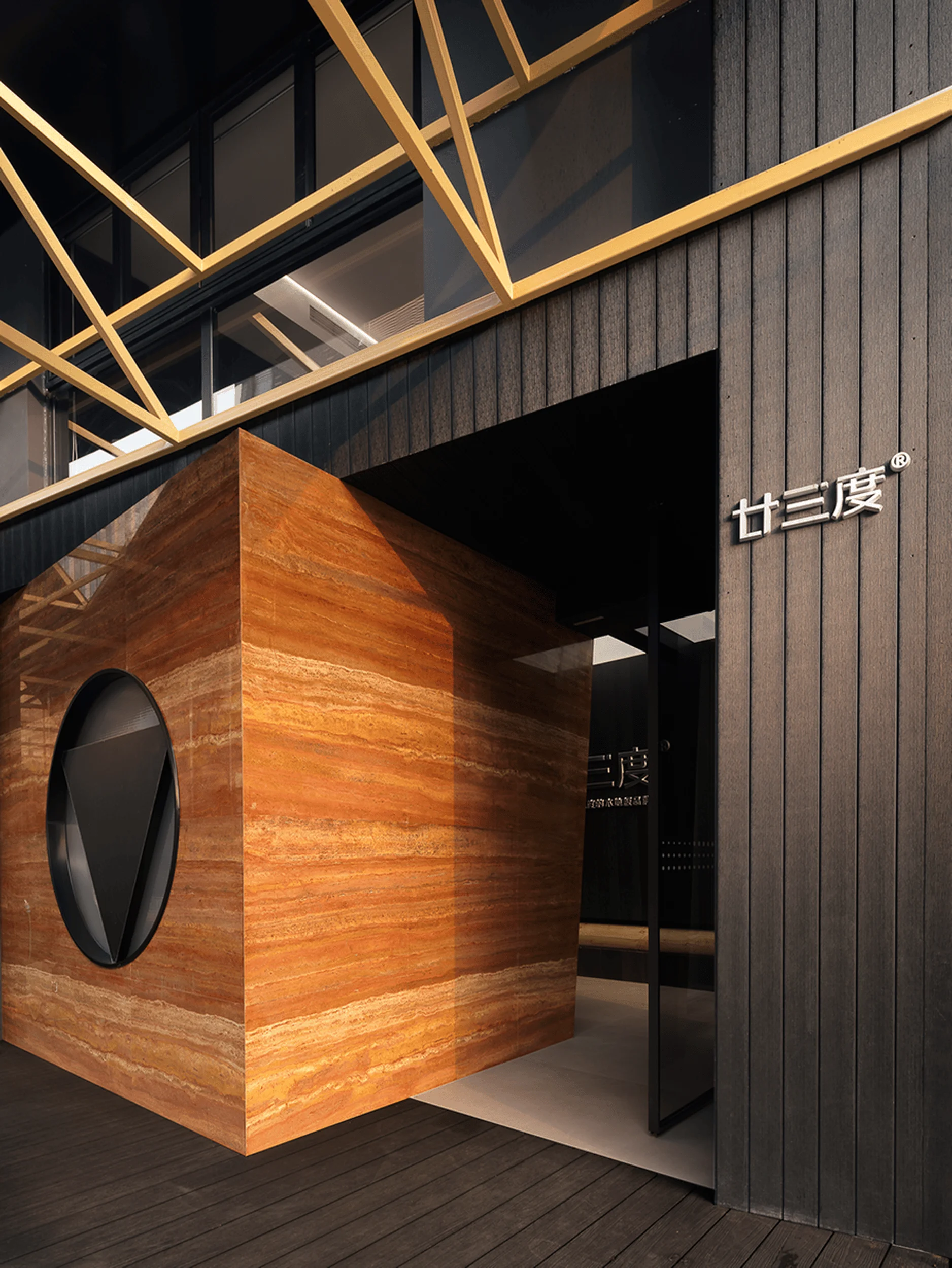Snøhetta’s Beijing City Library redefines the library experience in the digital age with its innovative architectural design and sustainable strategies.
Contents
Embracing Nature and Culture in Architectural Design
The Beijing City Library, designed by Snøhetta, stands as a testament to the enduring relevance of libraries in the digital age. Situated in the Tongzhou District, a burgeoning cultural hub in Beijing, the library’s design seamlessly integrates nature and culture, creating a vibrant space for learning, community engagement, and exploration. The building’s most striking feature is its expansive glass facade, which not only invites natural light into the reading spaces but also provides glimpses of the library’s rich interior to passersby. This architectural transparency fosters a sense of openness and accessibility, inviting the public to engage with the library’s resources and activities.
The Valley and Hills: A Landscape of Knowledge
The library’s interior is characterized by a dynamic interplay of spatial elements, creating a metaphorical landscape of knowledge. The heart of the library is a 16-meter-high WelcomeForum, featuring a series of terraced platforms that rise in gentle curves, resembling a valley. This central circulation artery, inspired by the nearby Tonghui River, seamlessly connects the north and south entrances, guiding visitors to various sections of the library. Rising from the valley are tiered, sculptural hills formed by seating, bookshelves, and open reading areas. These informal spaces offer opportunities for relaxation, conversation, and quiet reading while maintaining a connection to the library’s vibrant atmosphere.
Sustainable Design Strategies for a Greener Future
The Beijing City Library is not only a cultural landmark but also a model of sustainable design. The building has achieved the China GBEL Three Star rating, the highest attainable sustainability standard in the country. This achievement reflects Snøhetta’s commitment to minimizing both embodied and operational carbon emissions. The library incorporates a range of sustainable features, including modular construction, rainwater harvesting, and a rooftop photovoltaic (BIPV) system. The extensive roof overhangs reduce solar gain on the glass facade, which is currently the largest load-bearing glass system in China. This innovative design element contributes to the library’s energy efficiency without compromising its aesthetic appeal.
A Library for the 21st Century: Fostering Community and Knowledge Sharing
Snøhetta’s Beijing City Library is a powerful example of how libraries can adapt and thrive in the digital age. By prioritizing accessibility, community engagement, and sustainability, the library has become a vital hub for learning, cultural exchange, and social interaction. The library’s innovative design, inspired by natural landscapes and cultural heritage, creates a unique and engaging experience for visitors. The integration of advanced technologies, such as the automated book storage and retrieval system (ASRS), enhances the library’s functionality and user experience. The Beijing City Library stands as a beacon of knowledge and a testament to the enduring power of libraries to inspire, educate, and connect communities.
Project Information:
Project Type: Library
Architect: Snøhetta
Area: 75,000 sqm
Project Year: 2018-2023
Country: China
Photographer: Yumeng Zhu


